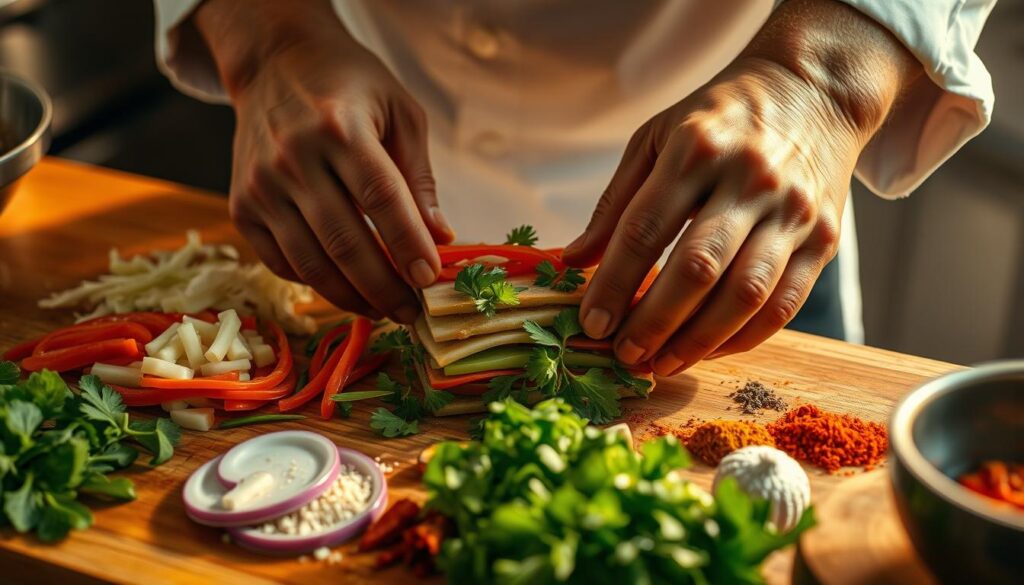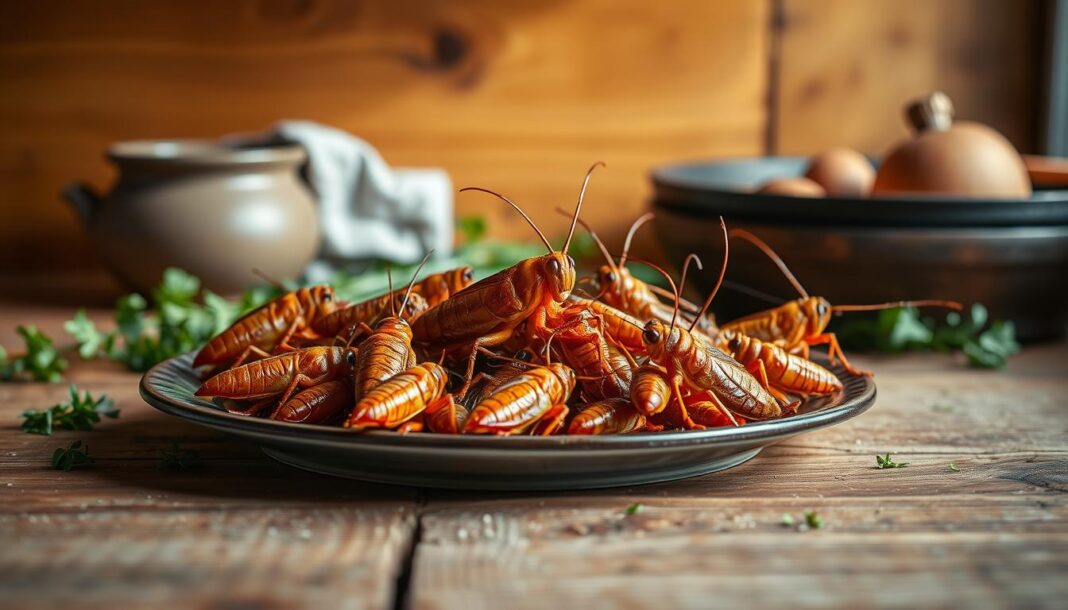Imagine a dish that has been a culinary staple for centuries, with its roots tracing back to medieval England around c.1450. Sops, a simple yet flavorful preparation, have stood the test of time. Essentially, it’s toasted bread soaked in a flavorful liquid, such as wine or ale, creating a comforting soup-like experience.
At Historical Foods, we’ve delved into the fascinating world of recipes like sops, exploring their historical significance and authentic preparation methods. Our comprehensive guide will walk you through the traditional medieval method of making golden sops, a delightful combination of toasted bread, white wine, and spiced almond milk.
Through meticulous research and testing, we’ve discovered that the flavor profile of sops resembles something familiar yet unique – warm spices and light sweetness that create a surprisingly delicious culinary experience.
Key Takeaways
- Understanding the historical context of sops and their significance in medieval cuisine.
- Learning the authentic method of preparing golden sops.
- Discovering the unique flavor profile of sops and its resemblance to modern culinary delights.
- Exploring the versatility of sops and their potential variations.
- Gaining insights into the cultural significance of sops in the culinary timeline.
What Are Sops? A Historical Culinary Delight
Sops, a dish with medieval roots, continue to captivate food enthusiasts. Essentially, sops are toast soaked in flavorful liquids such as wine or ale, a simple yet satisfying meal that was enjoyed across various social standings in medieval England.

Origins of Sop Recipes in Medieval England
The origins of sop recipes date back to medieval England, where they were a common breakfast or light meal. The historical recipe for “Soppes Dorre” from Harleian MS.4016 (circa 1450) showcases the sophisticated culinary practices of the time.
Different Types of Sops Across Cultures
Sop recipes varied across cultures, from European wine-soaked bread to the “sop sop” stew of Torres Strait Islander cuisine, featuring yams and root vegetables. This diversity highlights the adaptability of the sop concept.
The Cultural Significance of Sop Dishes
Sops served both practical and cultural purposes, utilizing available ingredients and bringing communities together. Understanding the historical context of sops appreciates the ingenuity of past cooks.
Essential Ingredients for the Perfect Sop Recipe
The foundation of a traditional sop lies in its carefully selected ingredients. Crafting an authentic sop recipe involves understanding the role of each component, from spices and aromatics to the bread base and liquid ingredients.
Traditional Spices and Aromatics
Traditional sops rely on a specific blend of spices known as “poudre douce.” This mixture typically includes sugar, ground ginger, cinnamon, cloves, and mace. The poudre douce blend is crucial for achieving the characteristic flavor profile of a sop.
The Importance of Poudre Douce Spice Blend
The poudre douce spice blend is a cornerstone of traditional sop recipes. To make it, combine 1 tablespoon of sugar, 1/2 teaspoon of ground ginger, 1/2 teaspoon of ground cinnamon, 1/8 teaspoon of ground cloves, and 1/4 teaspoon of ground mace. This blend provides the warm, aromatic flavors that define a sop.
Selecting the Right Bread Base
The bread base is another critical component of a sop. We recommend using a sturdy white bread, similar to the historical “paynmain,” which can absorb liquid without disintegrating. The quality of the bread directly impacts the overall texture and authenticity of the sop.
Making Homemade Almond Milk for Authentic Flavor
Homemade almond milk is a game-changer for sop recipes. To make it, soak 1 cup of raw almonds in water, then blend them with 3 cups of water and 1 cup of white wine. This mixture creates a rich, complex liquid that serves as the base for the sop.
| Ingredient | Quantity | Purpose |
|---|---|---|
| Raw Almonds | 1 cup (150 g) | Base for almond milk |
| Water | 3 cups (710 ml) | Dilutes almond paste |
| White Wine | 1 cup (235 ml) | Adds complexity to almond milk |
Wine Selection for Traditional Sops
Selecting the right wine is crucial for an authentic sop recipe. A medium-bodied white wine provides the perfect balance of acidity and sweetness, complementing the spices without overpowering them.

Our Expert Sop Recipe Cooking Method
The foundation of a great sop lies in its almond milk base, which we carefully prepare using traditional techniques. This step is crucial for achieving the right texture and flavor in our sop recipe.
Preparing the Almond Milk Base
To prepare the almond milk base, we soak raw almonds overnight, then blend them with 3 cups of water and 1 cup of white wine until smooth. The mixture is strained through a nut milk bag or fine cloth to achieve the desired consistency.
Toasting the Bread to Perfection
We toast thick slices of bread at 400°F (205°C) for 6-8 minutes on the first side and 4-5 minutes on the second side. This precise timing ensures the bread develops the right structure to absorb the almond milk without becoming soggy.
Combining Ingredients for the Classic Golden Sops
Hot toast is placed in a shallow bowl, drizzled with white wine to moisten, and then the thickened almond milk is poured around and slightly over the bread. The dish is finished with a sprinkle of poudre douce.
Simmering Techniques for Optimal Flavor Development
We simmer 2 cups of almond milk with saffron, 2 tablespoons of sugar, and 1/2 teaspoon of salt until it thickens, about 10 minutes. This process brings out the optimal flavor and texture, similar to a thin custard.
| Ingredient | Quantity | Purpose |
|---|---|---|
| Almonds | 1 cup | Base for almond milk |
| Water | 3 cups | Dilute almond mixture |
| White Wine | 1 cup | Add flavor to almond milk |
| Saffron | A pinch | Add color and flavor |
| Sugar | 2 tablespoons | Sweeten the sop |

Serving Your Sop Recipe with Historical Authenticity
With the sop recipe now prepared, the final step is to present it in a manner that honors its historical roots. To achieve this, we recommend serving your sop in shallow bowls, allowing the bread to remain partially visible while sitting in the flavorful liquid.
This presentation is not only historically accurate but also visually appealing. For complete historical authenticity, serve the sop while still warm, about 2-3 minutes after completing the final assembly. This allows the flavors to meld without letting the bread become overly saturated.
Traditionally, sops were served as a breakfast dish or light meal. Consider incorporating this recipe into your morning routine for a truly authentic experience. The gentle heat from the warm sop makes it particularly comforting in cooler weather.


